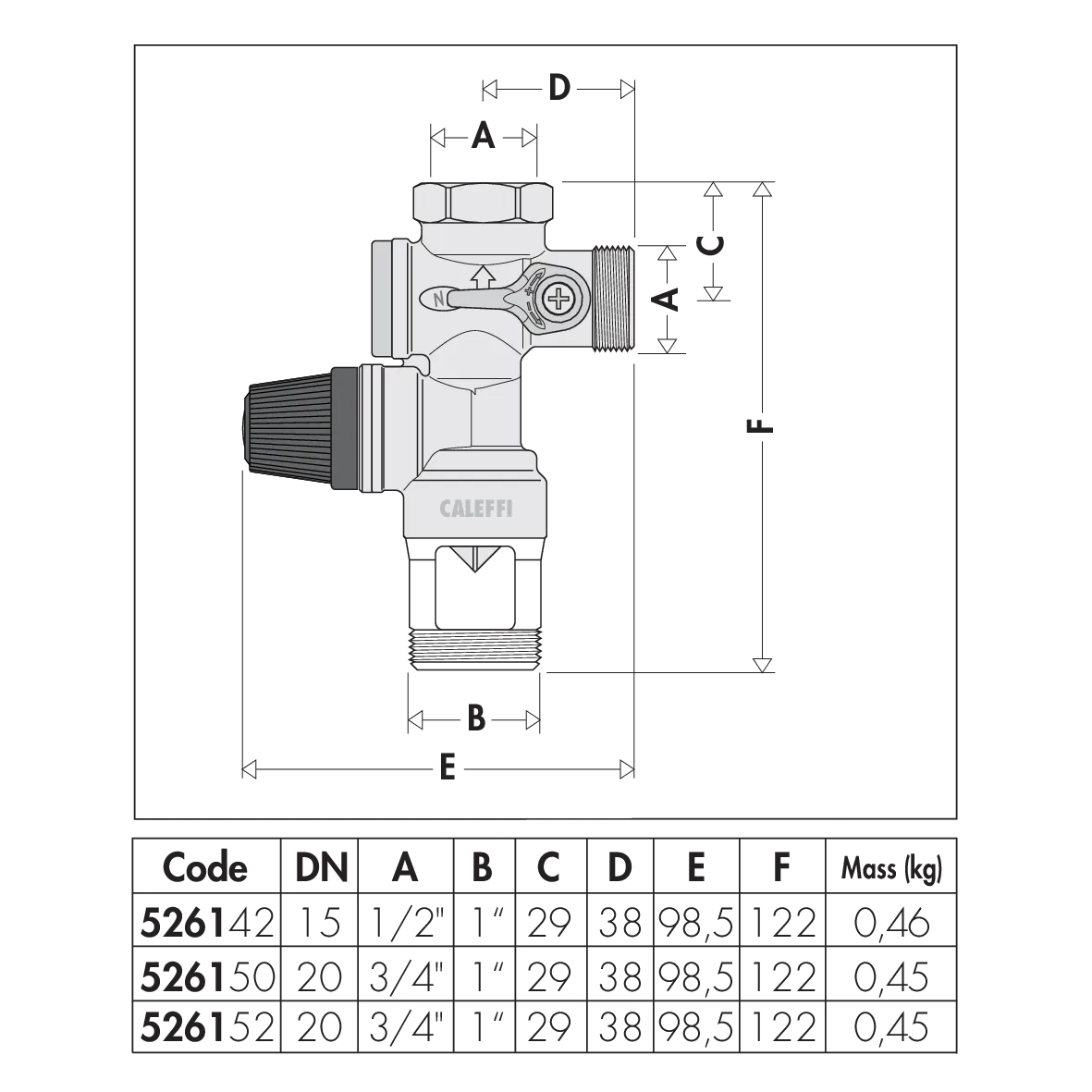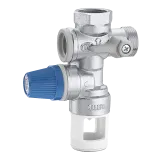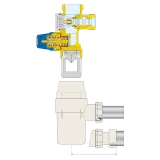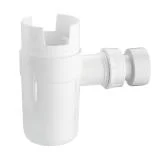Hydraulic safety group for hot water storage heaters, with shut-off valve and controllable check valve.
Product Description
Hydraulic safety group for hot water storage heaters, with shut-off valve and controllable check valve.
With stainless steel seat.
Certified to EN 1487.
Technical data
Maximum working pressure:
10 bar
Medium temperature range:
2–120 °C
Pressure setting:
7 bar
Finish:
chrome plated
Material:
brass
Certifications




Download
Drawings and specifications
| Part number | Inlet connection | Outlet connection | Maximum discharge rating |
|---|---|---|---|
| 526142 | G 1/2" A (ISO 228-1) M |
G 1/2" (ISO 228-1) F |
4 kW |
|
2D drawings
3D models
Tender text
CALEFFI, 526142.
Hydraulic safety group for hot water storage heaters, with shut-off valve and controllable check valve. With stainless steel seat.
Certified to EN 1487.
Inlet connection: G 1/2" A (ISO 228-1) M. Outlet connection: G 1/2" (ISO 228-1) F. Maximum working pressure: 10 bar. Medium temperature range: 2–120 °C. Pressure setting: 7 bar. Maximum discharge rating: 4 kW. Finish: chrome plated. Material: brass.
SCIP code
8d2a302e-a9cf-4f40-bf17-0a01923ef89b
|
|||
| 526152 | G 3/4" A (ISO 228-1) M |
G 3/4" (ISO 228-1) F |
10 kW |
|
2D drawings
3D models
Tender text
CALEFFI, 526152.
Hydraulic safety group for hot water storage heaters, with shut-off valve and controllable check valve. With stainless steel seat.
Certified to EN 1487.
Inlet connection: G 3/4" A (ISO 228-1) M. Outlet connection: G 3/4" (ISO 228-1) F. Maximum working pressure: 10 bar. Medium temperature range: 2–120 °C. Pressure setting: 7 bar. Maximum discharge rating: 10 kW. Finish: chrome plated. Material: brass.
SCIP code
490a1c25-9ed0-459d-bc28-bf43bead4099
|
|||
Faq - Frequent questions
My series 5261 valve is dripping, what can I do to solve the problem?
If the valve drips or frequently discharges, the system probably lacks an expansion vessel or, if present, it has lost pressure. We always recommend installing an expansion vessel together with a safety relief valve, especially if there is a hot water or storage heater present which, as it heats the water, causes the pressure to rise and therefore frequently triggers the safety relief valve. Roughly speaking, the volume of the expansion vessel must be at least 10 % of the storage volume.











